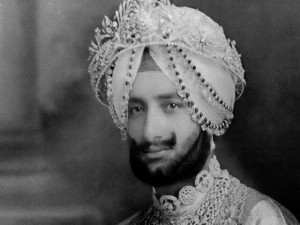Roopinder Singh
Nature gave him the height, variously recorded as 6’4” or 6’5”. His accomplishments made him look taller in the eyes of his contemporaries. Indeed, what first struck anyone who saw Maharaja Yadavindra Singh of Patiala was his towering personality and immaculate appearance.
Born a century ago on this date, he was a king who led from the front, be it in running the affairs of the state; in leading the princes of India into incorporating their states into the Union of India; in rehabilitating refugees after Partition; in promoting the Punjabi language, sports, horticulture, agriculture; and in diplomatic and other assignments.
Maharaja Yadavindra Singh ascended the throne of the state of Patiala at the age of 25 after the demise of his father, the famous Maharaja Bhupindra Singh.
A course at the Police Training School at Phillaur and an attachment to the 11th Sikhs added to his expertise which was put to use in the Patiala Police Force. His appointment as Secretary in the Departments of Forests and Horticulture allowed him to work on something he was passionate about. He also assisted his father, who was the Chancellor of the Chamber of Princes.
After his accession to the throne in 1938, Maharaja Yadavindra Singh was instrumental in cutting down much waste in state expenditure, and in promoting education and sports. When World War II broke out in 1939, he founded the Khalsa Defence of India League and led the effort to recruit Sikhs in the British Army. He also went to the war front in Italy, the Middle East and Malaya.
He also played a major role in the resettlement of the refugees: Muslims who had to be repatriated to Pakistan and a large number of Hindus and Sikhs who were welcomed into the state. Among them were teachers and students of Aitchison College, Lahore. The Yadavindra Public School in Patiala came about as a place that would continue the education and traditions of his alma mater in Patiala.
When PEPSU was merged with East Punjab in 1956, he ceased to be the Rajpramukh of the state. In 1958, he represented India in Paris at the 10th annual conference of UNESCO and put his knowledge of horticulture to good use as the leader of the Indian delegation to the UN Food and Agricultural Organisation for a decade or so.
He became Indian Ambassador to Rome in 1965, and served till 1967, when he returned to Punjab to stand as an Independent candidate for the Punjab legislature. He won but soon realised that politics was not his cup of tea. He presided over the annual sessions of Sikh Educational Conference and was chairman of the Punjabi University Commission.
In 1971, he became the Indian Ambassador to the Netherlands. It was in The Hague that he suffered a severe heart attack on June 17, 1974, and did not survive. He was 61.
Maharaja Yadavindra Singh is still remembered as a king who stood tall among his contemporaries. He played a crucial role in pre and post-Independence India. He contributed significantly to the fields of sports and education and was a person who left behind a legacy that has ensured his place in history.
Timeline
- Born on January 7,1913in Patiala
- Got early education in England
- In 1933, attended Aitchison College, Lahore
- He played in one Test representing the Indian team in 1934
- Served in the Patiala State Police
- After the demise of Maharaja Bhupindra Singh, he succeeded him as Maharaja of Patiala in 1938
- Served in the army and was posted in Malaya, Italy and Burma during the Second World War; was later given honorary rank of Lieutenant General
- After Independence, Yadavindra agreed to the incorporation of the princely state into India on May 5, 1948
- Yadavindra Singh was designated as the Rajpramukh of the new Indian state of Patiala and East Punjab States Union until it was merged with Punjab in 1956
- Yadavindra Singh married Maharani Hem Prabha Devi of Saraikela, Orissa, in 1935. His second marriage took place with Maharani Mohinder Kaur in 1938
- Yadavindra Singh had four children; daughters Heminder Kaur and Rupinder Kaur and sons Capt Amarinder Singh and Malvinder Singh
- Yadavindra Singh also served as president of the British Indian Olympic Committee from 1938 to 1947 and as president of the Indian Olympic Committee from 1947 to 1960
- He served as Indian delegate to the UN General Assembly from 1956 to 1957 and to UNESCO in 1958
- The building in which the premier school Yadavindra Public School is housed was donated by Yadavindra Singh. The old Moti Bagh Palace, which now houses the NIS, was also donated by Yadavindra Singh
- Yadavindra Singh served as Indian Ambassador to Italy from 1965 to 1966 and as Indian Ambassador to the Netherlands from 1971 until June 17, 1974
- He died suddenly at the age of 61 on June 17, 1974, in The Hague, Netherlands
This article was printed in The Tribune on January 7, 2013, the birth centenary of late Maharaja Yadavindra Singh

